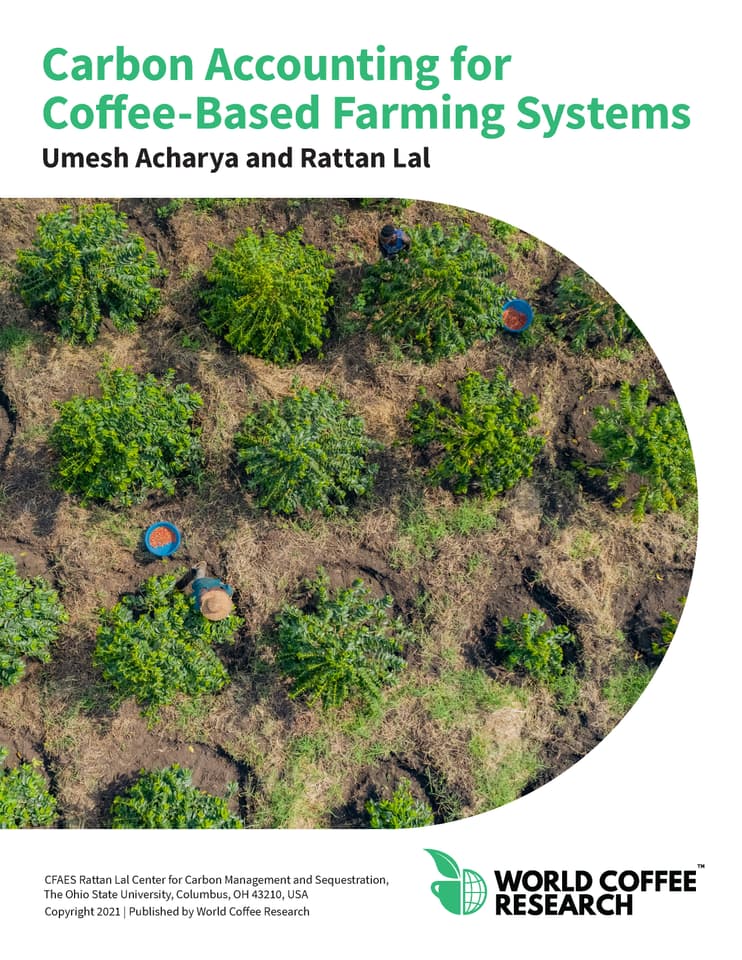
The objective of this white paper is to collate and synthesize information on commonly used tools in estimating the carbon footprint (CFP) of coffee-based farming systems, discuss pros and cons of those tools, review recent research on coffee’s CFP, and propose improvements to measure CFP more accurately at the farm level.
Key Takeaways
- There are limited studies on the CFP of coffee. The published literature demonstrates that coffee production, even with shade and organic systems, produces net carbon emissions. However, CFP ranges vary widely due to the use of different methodologies and tools.
- Most coffee carbon footprint calculation tools omit key components that are critical to accurately assessing the GHG emission and computing the CFP for coffee, in particular: SOC stock, SOC loss due to erosion, change in biomass (above and below ground), and GHG emission. Because CFP tools used for coffee do not include these factors, we should consider that there are no accurate estimates of coffee’s carbon footprint.
- Using a proposed new accounting system that includes missing components will result in more accurate emissions figures than prior existing carbon estimation tools would generate.
- A revised approach to calculating carbon footprints that takes into account missing factors would provide coffee growers and roasters an improved protocol for identifying the best management practices for growing coffee.
Authors
Umesh Acharya and Rattan Lal, CFAES Rattan Lal Center for Carbon Management and Sequestration, The Ohio State University